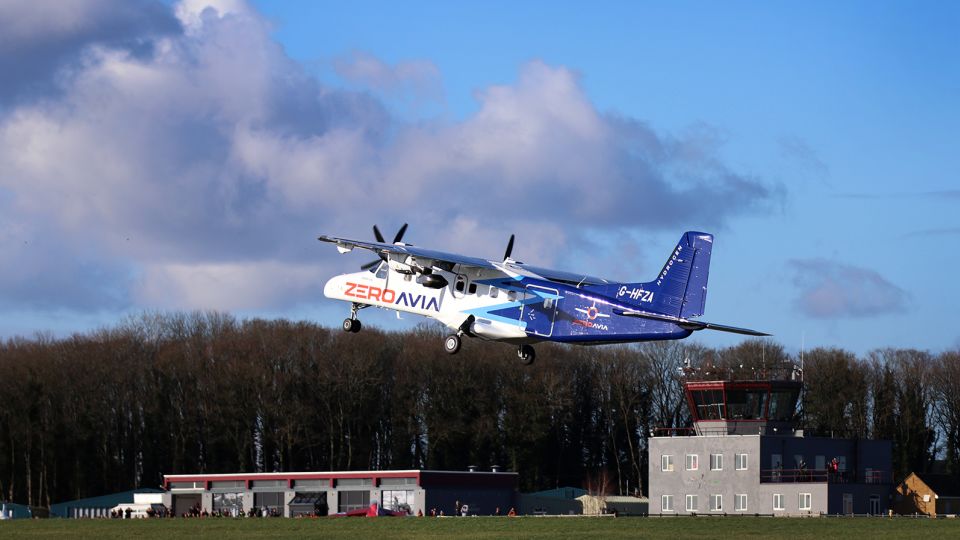
Features
Electric Propulsion
ZeroAvia tests world’s largest aircraft to be powered by hydrogen-electric engine
January 23, 2023 By Wings Staff
 ZeroAvia’s 19-seat Dornier 228 twin-engine aircraft takes to the sky in testbed configuration for first flight as part of the HyFlyer II project. (Photo: ZeroAvia)
ZeroAvia’s 19-seat Dornier 228 twin-engine aircraft takes to the sky in testbed configuration for first flight as part of the HyFlyer II project. (Photo: ZeroAvia) ZeroAvia on January 19, 2023, celebrated the flight of its 19-seat Dornier 228 testbed aircraft, retrofitted with a full-size prototype hydrogen-electric powertrain on the left wing of the aircraft.
The flight took place at ZeroAvia’s R&D facility at Cotswold Airport in Gloucestershire, UK, and lasted 10 minutes. The Dornier 228 completed taxi, take-off, a full pattern circuit, and landing. The landmark flight forms part of the HyFlyer II project, a development program backed by the UK Government’s ATI Program, which targets development of a 600kW powertrain to support nine to 19 seat aircraft worldwide with zero-emission flight.
ZeroAvia says this milestone flight moves the company toward its goal of commercial flights using only hydrogen fuel cell power by 2025, as well as scaling the engine technology to larger airframes.
“This is a major moment, not just for ZeroAvia, but for the aviation industry as a whole, as it shows that true zero-emission commercial flight is only a few years away,” said Val Miftakhov, Founder and CEO of ZeroAvia. “The first flight of our 19-seat aircraft shows just how scalable our technology is and highlights the rapid progress of zero-emission propulsion. This is only the beginning – we are building the future of sustainable, zero climate impact aviation.”
The twin-engine aircraft with ZeroAvia’s hydrogen-electric engine on its left wing is operated alongside a single Honeywell TPE-331 stock engine on the right. In this testing configuration, the hydrogen-electric powertrain comprises two fuel cell stacks, with lithium-ion battery packs providing peak power support during take-off and adding additional redundancy for safe testing. In this testbed configuration, ZeroAvia explains hydrogen tanks and fuel cell power generation systems were housed inside the cabin. In a commercial configuration, external storage would be used and the seats restored.
The is the largest ZeroAvia engine tested to date as the company works toward a certifiable configuration to be finalized and submitted for certification in 2023. ZeroAvia explains it two to five MW powertrain program, already underway, will scale the clean engine technology for up to 90-seat aircraft, with further expansion into narrowbody aircraft demonstrators over the next decade.